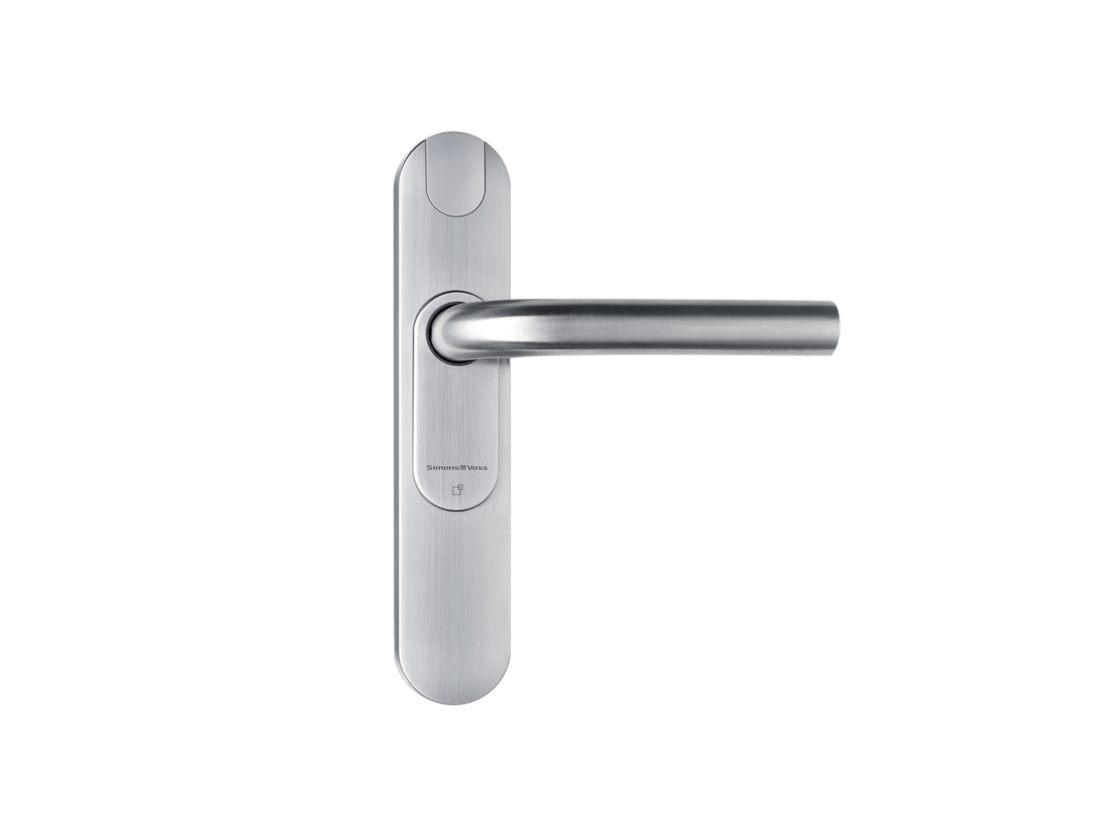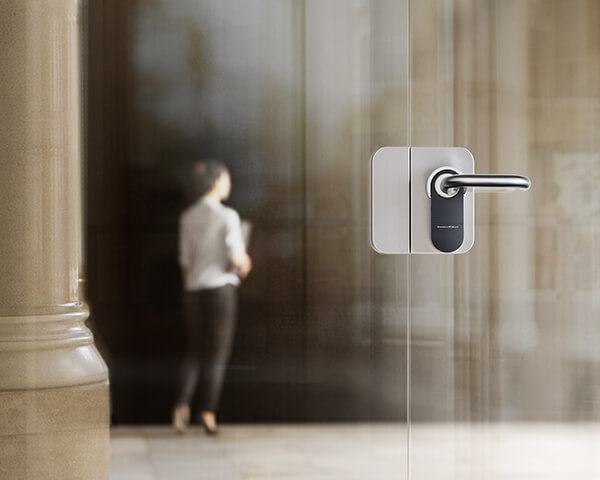
Electronic fitting
To understand what an electronic fitting is, we need to take a step back and first see what exactly defines and characterises a fitting. We can first look at the term in another sense and then in a narrower sense. You can begin to understand what a fitting is in a broader sense if you look at medieval church doors, for example, and see the forged metals they feature. These stabilise and decorate the door, but they are not what we identify as fittings or let alone electronic fittings.
When we talk about fittings and electronic fittings in locking technology, we are referring to a door fitting, which can mean the handle, thumb-turn and so on, i.e. the door handle set as a whole.
Even though normal fittings and electronic fittings may be different, they still have much in common.
Door fitting functions
An important basic function that a fitting and an electronic fitting have in common is that they secure doors. To ensure that they remain secure, it is important that fittings cannot be unscrewed on the outside.
Fittings include door hinges, door locks and door handles. As a general rule, they may be made of metal, aluminium and plastic, although an electronic fitting usually has a stainless steel or (at an extra charge) brass surface.
The purpose of fittings, including electronic fittings, is also to allow doors to move. To make this possible, hinges are featured as pivot bearings with the lock and its accessories located opposite the bearings.
Even when fittings and electronic fitting in a narrow sense are used due to their functionality and, as mentioned above, their visual aspect is not important, attention is still paid to their appearance since a fitting ultimately will catch the eye. This is also the case for electronic cylinders.
The electronic fitting
Anyone who decides on a digital locking and access control system will rely on electronic locking technology. Needless to say, such systems maintain the functions of a conventional locking system, but system components such as an electronic fitting enhance the system and give it many advantages.
An electronic fitting can be opened with digital locking media, such as a transponder or smart card, and there is also the option of integrating PIN identification using a keypad. Radio communication replaces mechanical key scanning here. In contrast to a normal fitting, an electronic fitting can also be locked without the need for a cylinder to be installed, into which a key would otherwise be inserted.
If you wish to have an electronic fitting, you will find a wide range of variants and accessories when it comes to handles and covers, for example. An electronic fitting is also available with door monitoring function on request, so that the fitting can forward security-relevant information instantly. An electronic fitting can be networked wirelessly.


Interested?
Are you interested in installing electronic fittings and their associated digital locking system? If so, contact us for more information about locking systems such as System 3060 and fittings such as the SmartHandle. We will be more than glad to help you!
